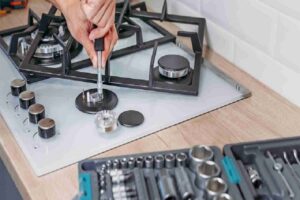Casting manufacturing is a widely used process in the production of various metal and non-metal objects, ranging from complex automotive parts to simple household items. It is a versatile method that allows for the creation of intricate shapes and provides excellent material properties. In this comprehensive overview, we will explore the key processes involved in casting manufacturing and the steps required to produce high-quality cast components.
1. Understanding Casting:
Casting is a process where a liquid material, typically metal or plastic, is poured into a mold and allowed to solidify, taking the shape of the mold cavity. The solidified material, known as the casting, is then removed from the mold for further processing or use in various applications.
2. Types of Casting:
There are several types of casting processes, each suited for specific applications and materials. Some common casting methods include:
a. Sand Casting: One of the oldest and most widely used casting techniques, sand casting involves creating a mold from a mixture of sand and a binder. The pattern is pressed into the sand, and molten metal is poured into the cavity.
b. Investment Casting: This process, also known as lost-wax casting, is used to create complex and detailed parts. A wax or plastic pattern is coated with a ceramic material to form the mold. The wax is then melted out, leaving behind the mold cavity into which molten metal is poured.
c. Die Casting: Die casting is suitable for mass production of small to medium-sized components with high dimensional accuracy. Molten metal is injected into a reusable steel mold, also known as a die, at high pressure.
d. Centrifugal Casting: In this method, the mold is rotated at high speeds, allowing molten metal to be forced against the mold’s inner walls. This technique is ideal for producing cylindrical components like pipes and rings.
e. Continuous Casting: Commonly used in the production of metals such as steel and aluminum, continuous casting involves pouring molten metal into a water-cooled mold, allowing it to solidify into a continuous length or strip.
3. Steps in Casting Manufacturing:
a. Pattern Making: The casting process begins with the creation of a pattern, which is an exact replica of the desired object. The pattern can be made from various materials like wood, plastic, or metal. It is used to form the mold cavity and must be designed with allowances for shrinkage and machining.
b. Mold Preparation: The pattern is embedded in a molding material to create the mold. In sand casting, the molding material is a mixture of sand and a binder, while in investment casting, a ceramic slurry is used. For die casting, steel molds are used, and for centrifugal casting, a rotating mold is employed.
c. Pouring: Once the mold is ready, it is securely clamped or fastened to prevent any leaks during the pouring process. Molten metal or alloy is then poured into the mold cavity through a gating system.
d. Solidification and Cooling: After the molten metal is poured, it undergoes a cooling and solidification process inside the mold. The cooling rate affects the microstructure and properties of the final casting.
e. Removal and Cleaning: Once the casting has solidified, the mold is opened, and the casting is removed. Depending on the casting method and material, excess material, such as runners and risers, may need to be removed. The casting may also undergo various cleaning processes to remove any residual mold material.
f. Finishing and Machining: In some cases, the casting may require additional finishing and machining to achieve the desired surface finish, dimensional accuracy, and shape.
4. Advantages of Casting Manufacturing:
Casting offers several advantages over other manufacturing methods, including:
a. Design Flexibility: Casting allows for the production of complex shapes and intricate details that may be challenging or impossible to achieve using other processes.
b. Material Selection: Casting is compatible with a wide range of materials, including various metals and alloys, plastics, and even ceramics.
c. Cost-Effectiveness: For large-scale production, casting can be a cost-effective method due to reduced labor and tooling costs.
d. Shorter Lead Times: Casting can lead to shorter lead times compared to other manufacturing processes, enabling faster production and delivery of components.
5. Quality Control:
To ensure the quality of cast components, rigorous quality control measures are implemented throughout the casting manufacturing process. These include:
a. Material Testing: Verification of the material’s composition and properties before casting to ensure it meets specifications.
b. Non-Destructive Testing: Techniques like X-ray and ultrasonic testing are used to detect any internal defects or discontinuities in the casting.
c. Dimensional Inspection: Precise measurements are taken to ensure the casting meets the required tolerances.
d. Visual Inspection: Surface inspection is performed to detect any external defects or imperfections.
Conclusion:
Casting manufacturing is a versatile and widely used process for creating a diverse range of objects. By understanding the various casting methods and the steps involved in the casting process, manufacturers can produce high-quality components that meet the demands of modern industries. The ability to create complex shapes, use a variety of materials, and achieve cost-effective production makes casting a valuable technique in the world of manufacturing. Embracing the best practices of quality control ensures that the final cast components are reliable, safe, and fit for their intended applications.




